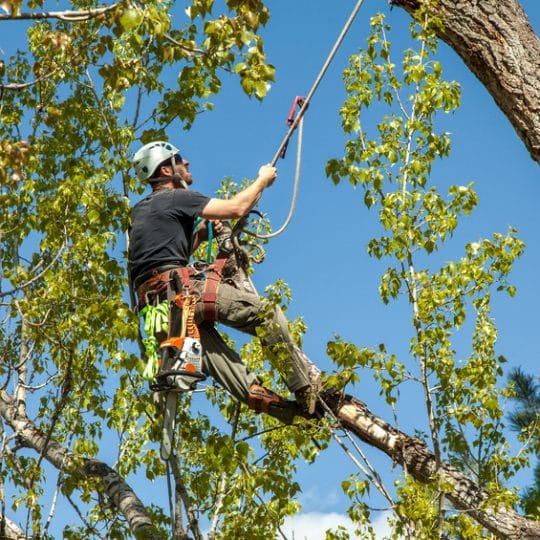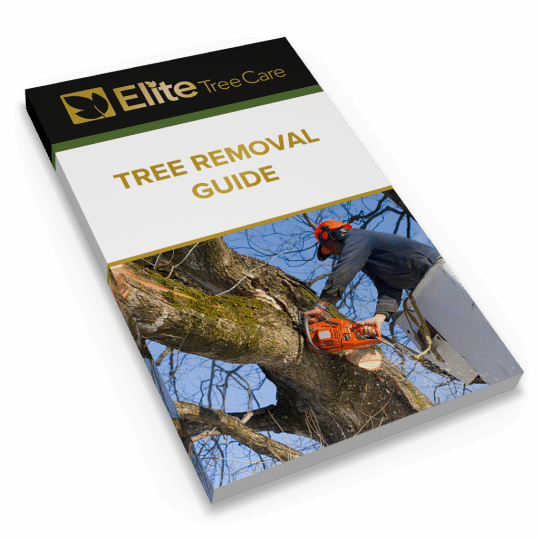An Alternative to Tree Removal: Cabling and Bracing
Posted
October 13, 2016

Cables and brace rods are structural supports that us tree specialists use for three purposes. First, cables and braces can prevent the death or “failure” of an otherwise healthy tree that has a major structural weakness, such as large limbs with V crotches. Second, they can help support a damaged tree, such as a large tree that lost one of its leader branches in a storm, while it heals. Third, they can mitigate hazards of an important tree so that it doesn’t damage its surroundings. Is cabling and bracing a better option for you than tree removal? Read on to find out.
How does cabling and bracing work?
A tree specialist will first prune the tree to remove any dead or damaged branches. Then they will install cables, brace rods, or sometimes both in tandem to provide maximum structural support to a tree. Cables consist of extra high strength steel or synthetic fibers and are attached to bolts installed in the upper crown of a tree. With a cable in place, supported branches cannot move too much and are less likely to snap and “fail” during storms.
Braces provide even more rigid support for a tree around the lower part of the trunk. It stabilizes weak crotches and can protect the trunk from twisting in violent weather. Basically, braces are steel rods threaded through clusters of split trunks, weak branches or multiple stems.
Trees that benefit most from cabling and bracing
Certain species tend to form wide open canopies. These trees can benefit more than most others from cabling and bracing. The Live Oak, Shumard Red Oak, Texas Red Oak, Pecan, and Cedar Elm fall into this category.
Trees that grow wide, multiple or split trunks also do well with properly installed cabling and bracing. These species include the Texas Red Oak, Shumard Red Oak, Live Oak, Cedar Elm, Arizona Ash, Hackberry, and River Birch.
If you want to save a special tree rather than remove it, cabling and bracing might be a good option. It isn’t right for every tree and every situation, though.
5 questions to consider before cabling and bracing:
- Is the tree otherwise healthy?
- Is there enough sound wood to anchor the cable?
- Can I accept the fact that cabling is no guarantee of success? That failure is still possible?
- Am I prepared to get the cable inspected annually by a tree specialist, and replaced once the tree grows too large?
- Is cabling and bracing the best way to treat this tree? Or am I just trying to preserve something that has reached the end of its useful life?
A certified tree specialist can best determine if your trees can benefit from the installation of cables and bracing rods. Contact Elite Tree Care today at 610-935-2279 to discuss the right path forward for your tree and landscape.

Download Your FREE Tree Removal Guide
Even dedicated DIYers should think twice before taking on the task of tree removal. Our guide will help you decide whether to hire a tree service and how to get the most value for your money.